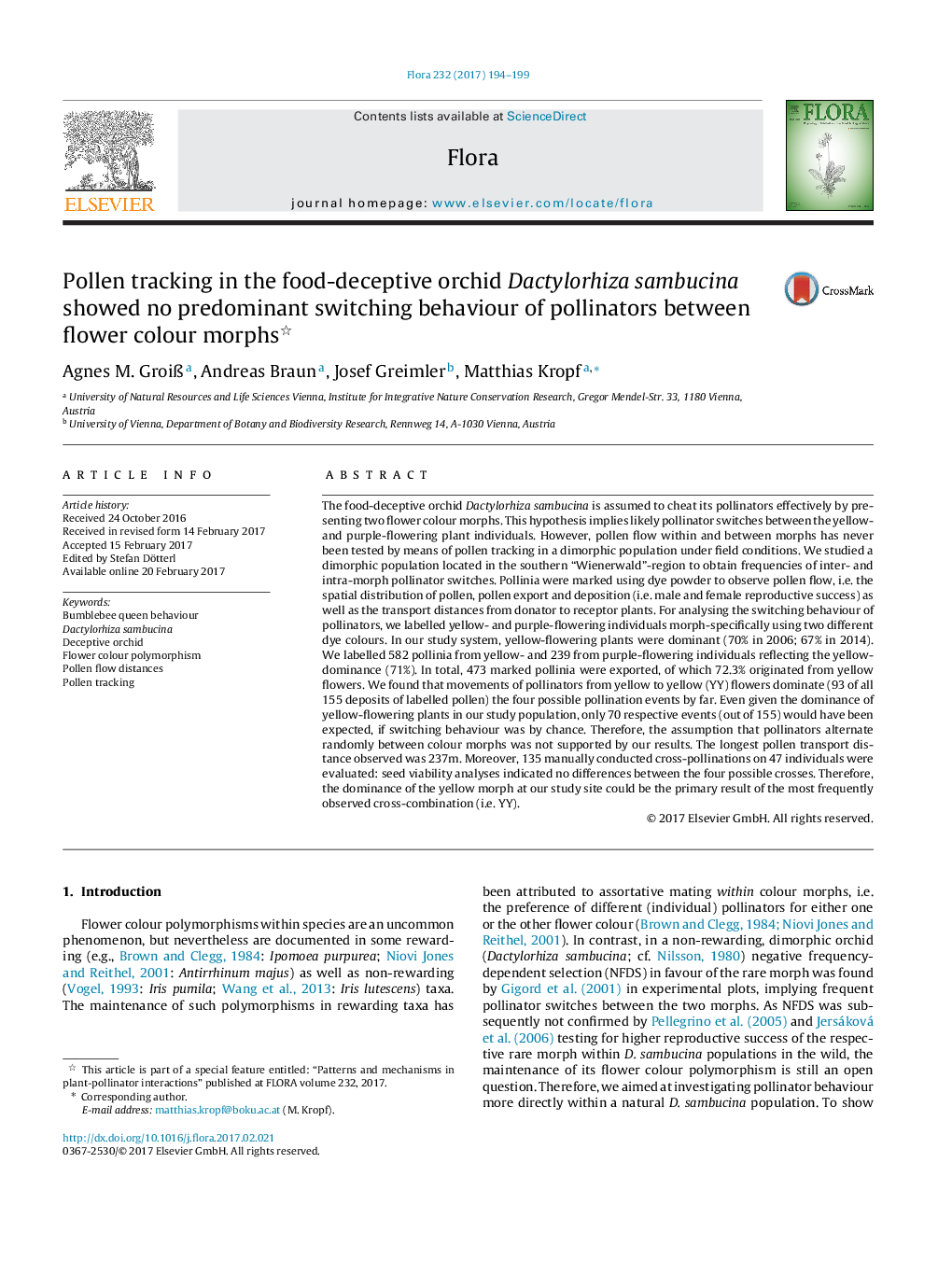| کد مقاله | کد نشریه | سال انتشار | مقاله انگلیسی | نسخه تمام متن |
|---|---|---|---|---|
| 5532471 | 1549927 | 2017 | 6 صفحه PDF | دانلود رایگان |

- We studied a dimorphic predominantly yellow-flowering Dactylorhiza sambucina population.
- Experimental pollen tracking showed prevailing pollen movements within the same morph.
- Negative frequency-dependent selection is not supported as process maintaining dimorphism.
- Four possible crossings between the morphs yielded equal portions of viable seeds.
- Maximum pollen transport was 237Â m, i.e. the longest of all orchid tracking studies.
The food-deceptive orchid Dactylorhiza sambucina is assumed to cheat its pollinators effectively by presenting two flower colour morphs. This hypothesis implies likely pollinator switches between the yellow- and purple-flowering plant individuals. However, pollen flow within and between morphs has never been tested by means of pollen tracking in a dimorphic population under field conditions. We studied a dimorphic population located in the southern “Wienerwald”-region to obtain frequencies of inter- and intra-morph pollinator switches. Pollinia were marked using dye powder to observe pollen flow, i.e. the spatial distribution of pollen, pollen export and deposition (i.e. male and female reproductive success) as well as the transport distances from donator to receptor plants. For analysing the switching behaviour of pollinators, we labelled yellow- and purple-flowering individuals morph-specifically using two different dye colours. In our study system, yellow-flowering plants were dominant (70% in 2006; 67% in 2014). We labelled 582 pollinia from yellow- and 239 from purple-flowering individuals reflecting the yellow-dominance (71%). In total, 473 marked pollinia were exported, of which 72.3% originated from yellow flowers. We found that movements of pollinators from yellow to yellow (YY) flowers dominate (93 of all 155 deposits of labelled pollen) the four possible pollination events by far. Even given the dominance of yellow-flowering plants in our study population, only 70 respective events (out of 155) would have been expected, if switching behaviour was by chance. Therefore, the assumption that pollinators alternate randomly between colour morphs was not supported by our results. The longest pollen transport distance observed was 237m. Moreover, 135 manually conducted cross-pollinations on 47 individuals were evaluated: seed viability analyses indicated no differences between the four possible crosses. Therefore, the dominance of the yellow morph at our study site could be the primary result of the most frequently observed cross-combination (i.e. YY).
Journal: Flora - Volume 232, July 2017, Pages 194-199